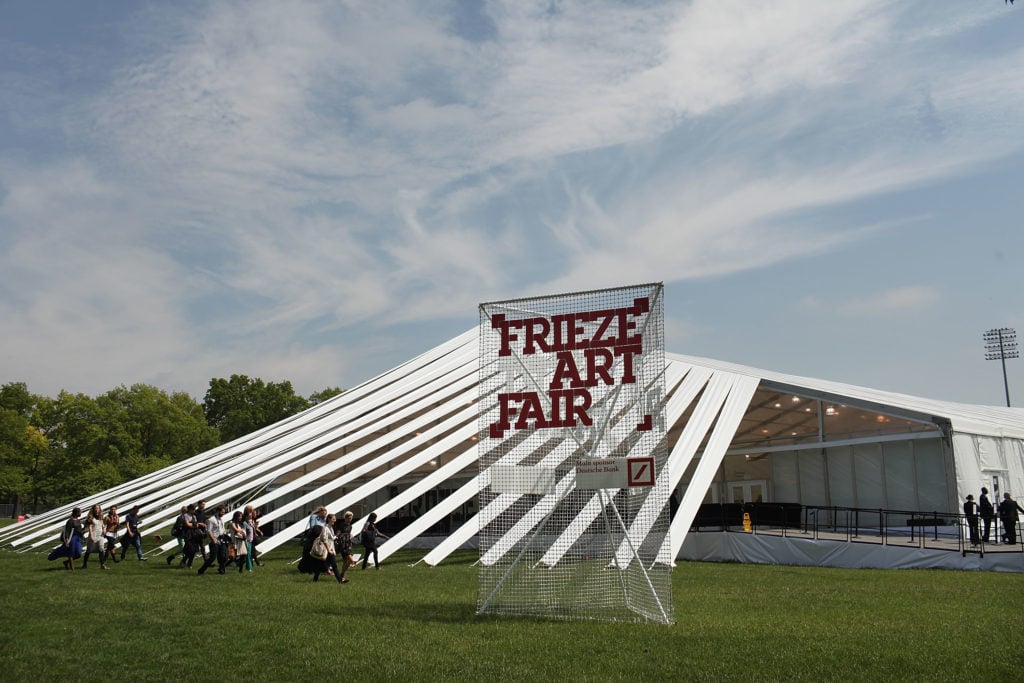Art Fairs
In a Sign of the Times, Frieze New York No Longer Requires Exhibitors to Have a Physical Gallery Space
Nicole Klagsbrun and Tif Sigfrid are among the gallery-less dealers at this year's fair.

Nicole Klagsbrun and Tif Sigfrid are among the gallery-less dealers at this year's fair.

Eileen Kinsella

Frieze New York made a seemingly small tweak to the language of its 2018 admission criteria, but it is standing out to many industry observers as a big sign of the changing landscape for commercial galleries.
Applicants to the main section of the fair still “must show an international program of artists and present a minimum of four exhibitions per year in their gallery,” as well as be “a commercial venture.” But then there’s a new qualification: “Exceptions will be considered on a case-by-case basis.”
Some such exceptions are already taking effect. The dealer Nicole Klagsbrun, who closed her New York gallery in 2013, will be one of the few names in the main section who does not have a physical gallery space. Another exhibitor, Tif Sigfrid, is currently without a space while she relocates from Los Angeles to Athens, Georgia. This is her third time participating in Frieze New York.
“It just seems like it’s out of the blue and a bizarre choice,” says a gallerist who shows at Frieze and wished to remain anonymous. “I don’t really understand where they’re going with the fair.”
Others are more optimistic. “Frieze started in the UK as an ‘out-of-the-box’ art fair,” says New York-based art advisor Wendy Cromwell. “I don’t think it hurts the brand to see good independent people mounting projects in the New York fair. People are hungry to buy exciting art, period. Collectors are not put off by having more ‘project’-based stands if they are well-vetted by Frieze.”

Andres Serrano’s portraits of Donald Trump and Snoop Dogg at Galerie Nathalie Obadia’s Frieze New York booth. Courtesy of Andrew Goldstein.
Regardless of one’s feelings about the change, it’s a certainly an indication of the challenges that many galleries—particularly those in the increasingly competitive middle market—have faced in recent years. “I just don’t want the gallery system anymore,” Klagsbrun said when she closed her space. “The old school way was to be close to the artists and to the studios. Nowadays, it’s run like a corporation.”
“It’s similar to the move we’ve seen with other fairs to recognize that the landscape of artist intermediaries is evolving,” said dealer Ed Winkleman. “There are an increasing number of really good artists who work with intermediaries who don’t run a physical space, and ultimately what Frieze is promising their visitors is the best round-up of contemporary art they can assemble, not the best round-up of galleries.”
When asked why the fair changed its application criteria, a spokesperson for Frieze said that because the New York edition “features a broad mix of galleries and programs, including both contemporary galleries and a growing selection of 20th-century and ethnographic galleries,” the fair wanted “to better reflect the kinds of galleries that apply and that have already been participating in the fair.”
Frieze London continues to require a physical exhibition space, while Frieze Masters has never required one.
There are also other changes taking effect at Frieze New York this year. For one thing, there will be an additional preview day, giving VIPs two full days to shop before the general public descends on Randall’s Island. The additional preview is “designed to welcome and enhance the experience of the increasing number of collectors, museum professionals, and museum groups,” the spokesperson said. “As Frieze leadership considered the fair schedule, they also drew directly from feedback and ongoing conversations with participating galleries. The extended schedule will also help to build the momentum of Frieze Week events throughout the city.”